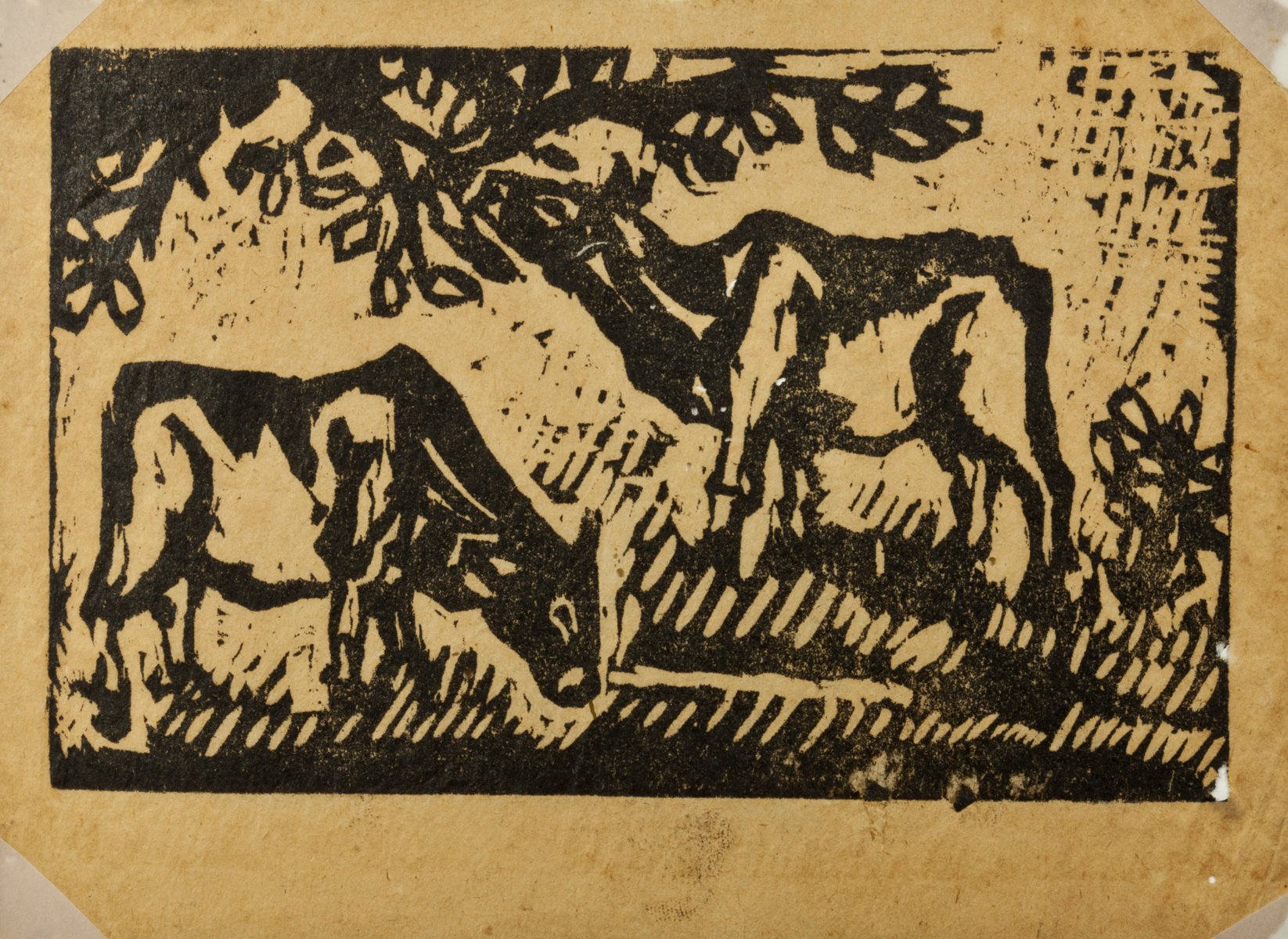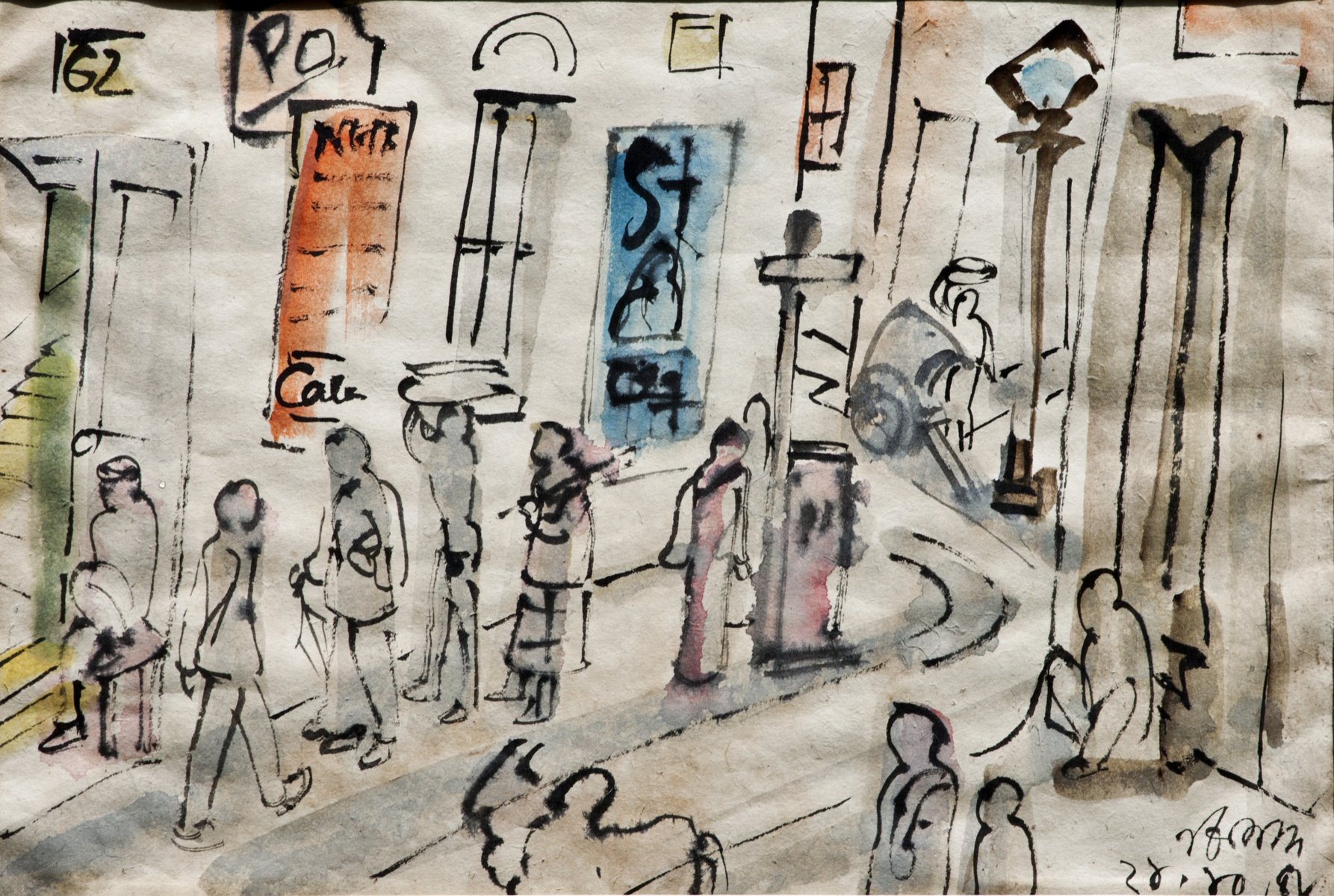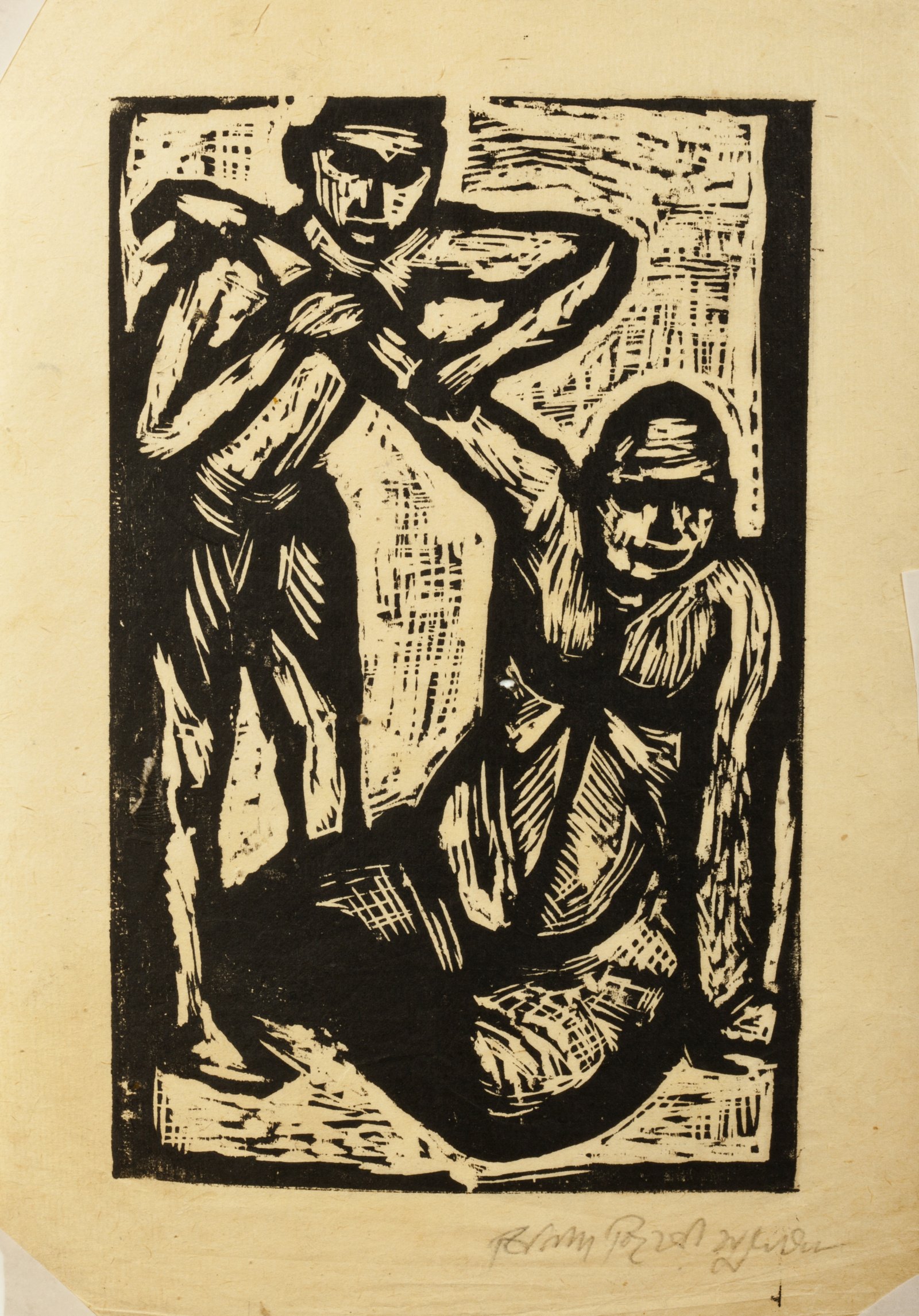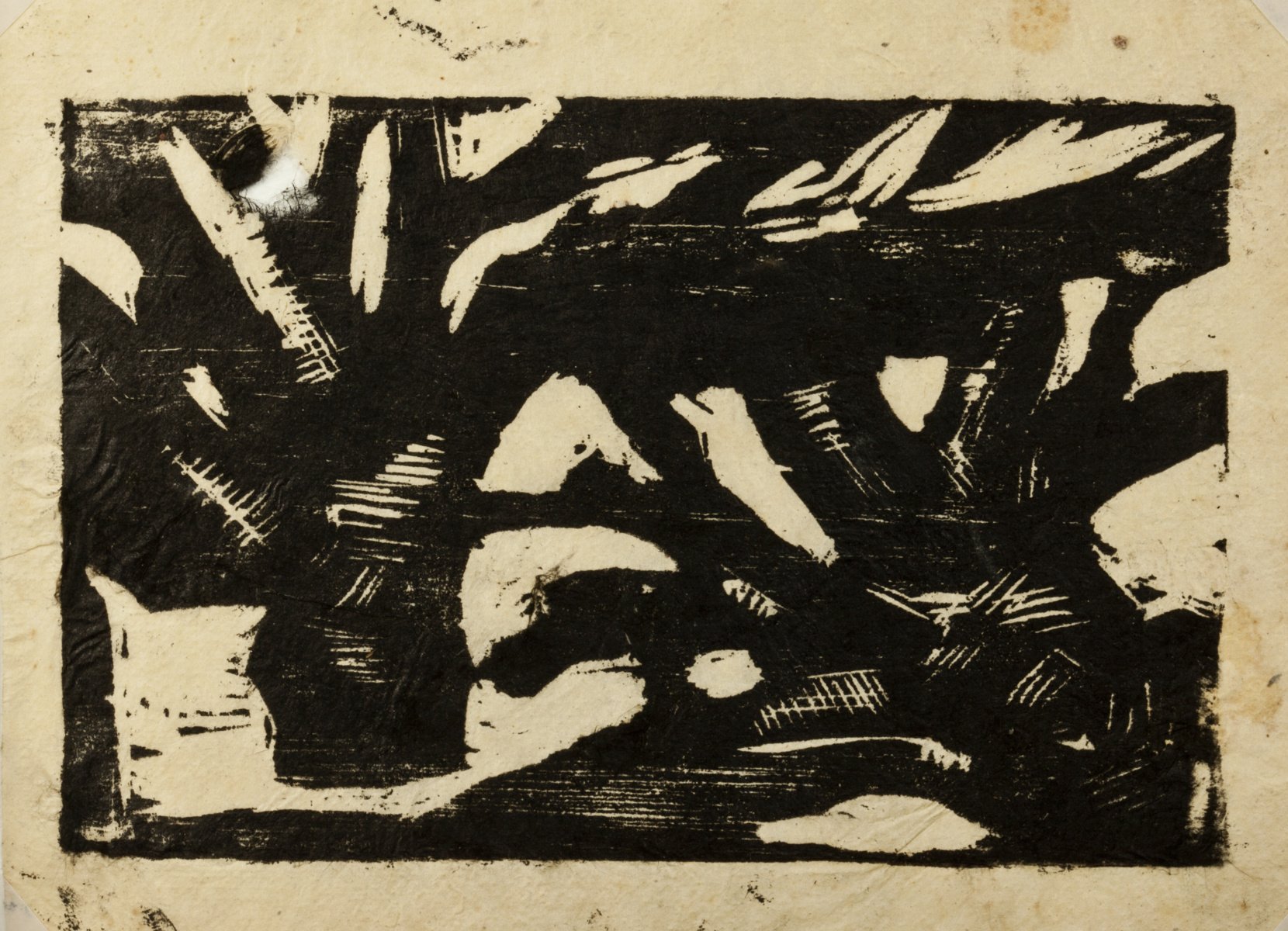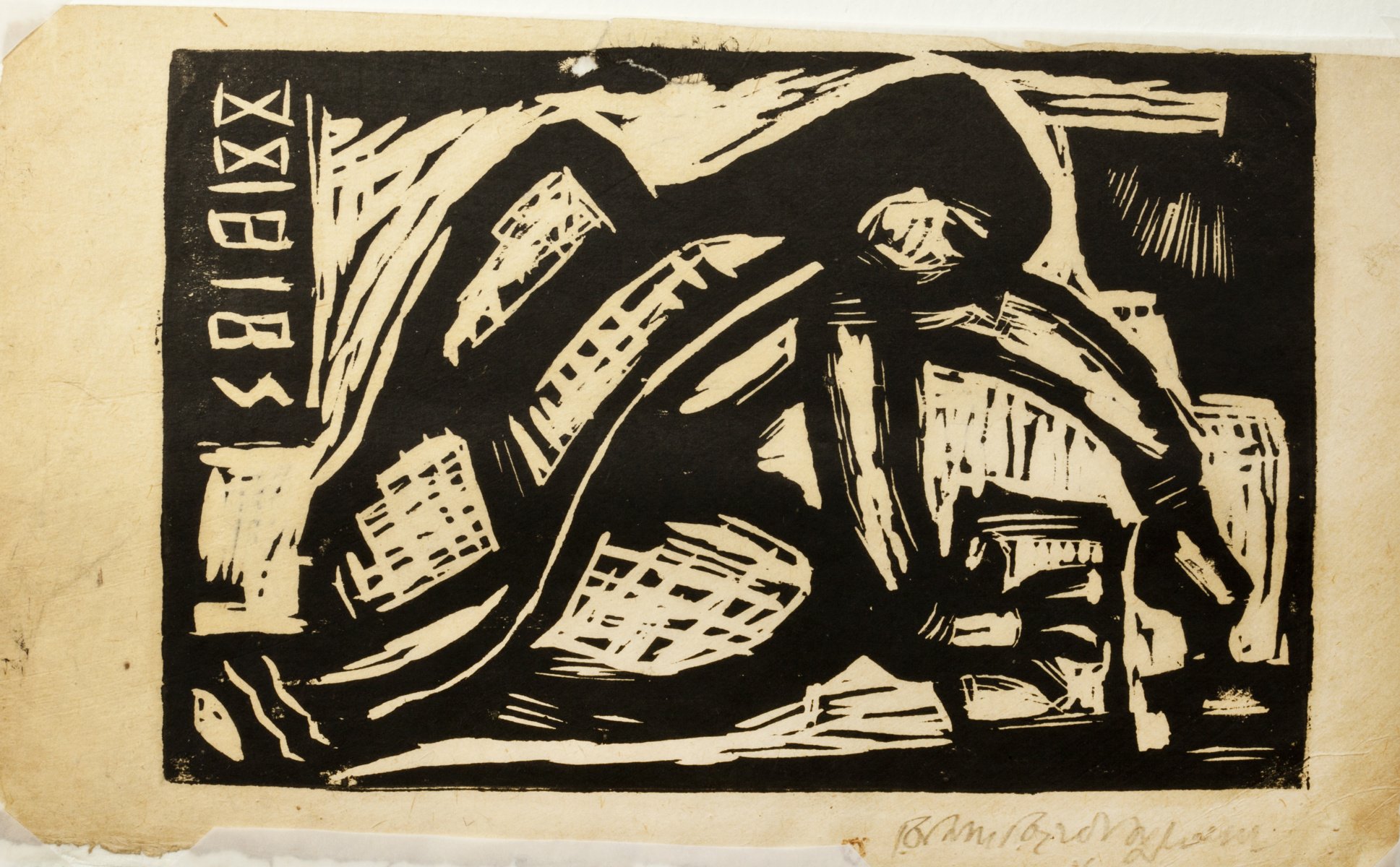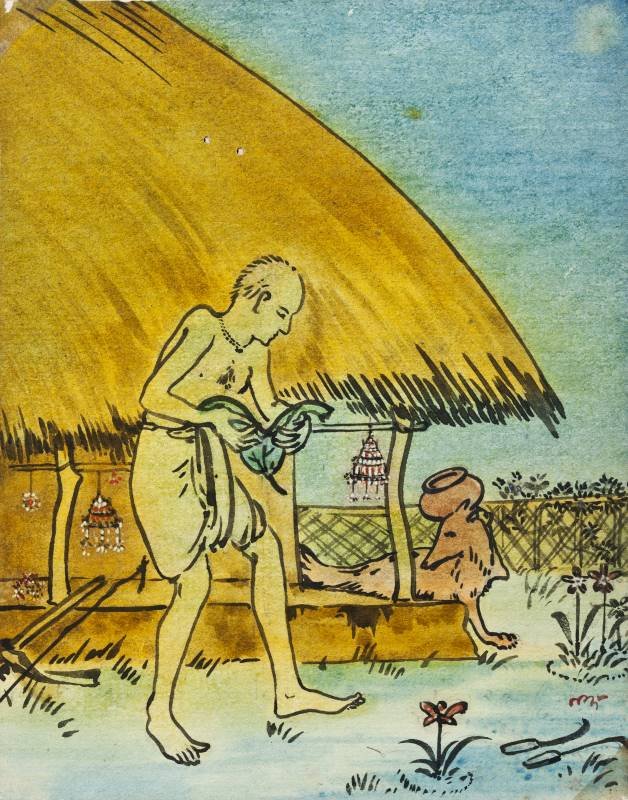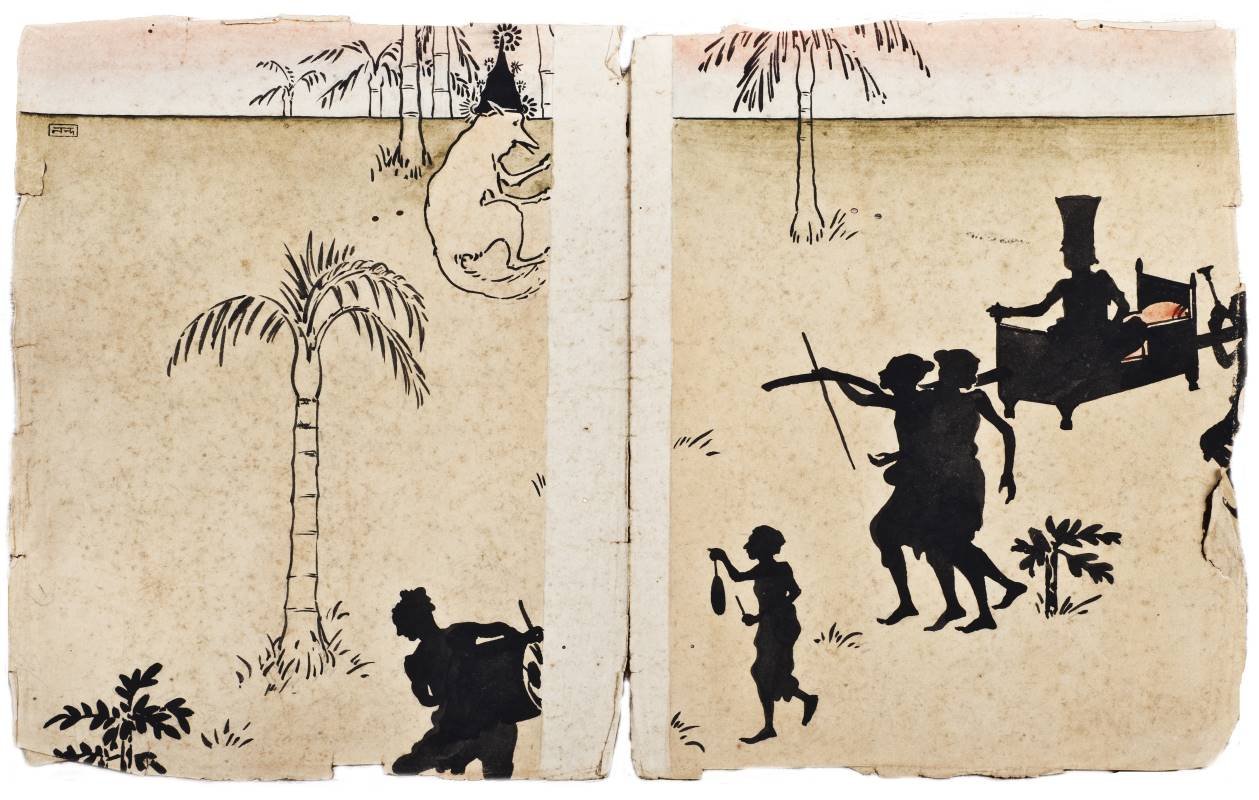
Nandalal Bose & Benode Behari Mukherjee
December 11 - December 17, 2012
Benode Behari Mukherjee (1904-1980)
Born in 1904, Benode behari is remembered today as a distinguished artist and an inspiring teacher. From early life, Benodebehari had to struggle with impaired vision and the threat of losing his eyesight completely. As a child, his education in Kolkata was hampered because of his poor eyesight and he was sent to Santiniketan Brahmacharya Vidyalaya. His passion for the visual arts took him to Kala Bhavana, in Santiniketan where he later joined its faculty and played an integral part in making it into one of the most important institutions for the study of art. He was surrounded by pristine nature which found a place later in his landscape paintings.
Benodebehari’s style of work was simple and ideological. A student of Nandalal Bose, he renounced overt symbolism of mythological descriptions. Instead, he turned to simple representations of his immediate surroundings. Even these reflect everyday life in Santiniketan. Benodebehari worked on different media: tempera, watercolour, oil, woodcut, paper collage, pastel and others. He classified his forms on the basis of the carefully constructed horizontal axis, vertical axis, diagonal axis and curvilinear axis. The postcards demonstrate the usage of all these four kinds of lines. Benodebehari used a complex fusion of idioms drawn from western art as well as from the orient. Far eastern traditions are evident in his calligraphy and in the wash technique he used. The pressure of his brush strokes and ink distribution on handmade paper are remarkable
From 1940 till 1956 when he was losing his vision completely; forms, contours and lines gained immense priority in his works in contrast to the erstwhile optical sensation. He created beautiful pictorial abbreviations. The card sketches presented in this exhibition clearly show this inclination. City streets, houses, and narrow lanes find a geometric placement in Benodebehari’s works.
The artist passed away in 1980.
Nandalal Bose (1882- 1966)
Born in Kharagpur, Bihar in 1882, Nandalal Bose was one of the pioneers of modern Indian art and a significant figure of Contextual Modernism. He became the Principal of Kala Bhavan, Santiniketan in 1921 and taught some of the greatest artists of the 20th century including K.G. Subramanyan, Benode Behari Mukherjee, Ramkinkar Baij and Satyajit Ray, to name a few. In his artistic practice, Bose was greatly influenced by the Tagore family, E. B. Havell, A. K. Coomaraswamy and Mahatma Gandhi. He was recognized not only for his paintings and murals, and his role as a pedagogue but also for his postcard drawings, the renderings of plays by Rabindranath Tagore, and for his designing and execution of the venues of the Indian National Congress conventions in Lucknow, Faizpur and Haripura from 1935 to 1938. Although he had already gained international recognition as a modern artist, his association with Gandhi elevated him to the position of a national icon. Moreover, he was entrusted with the task of designing and illustrating the original manuscript of the Constitution of India, creating 22 unique illustrations depicting scenes from India's historical and cultural past. In 1954, he was honored with the Padma Vibhushan award.
Nandalal Bose passed away on 16th April 1966, at the age of 83 in Calcutta.
Benode Behari Mukherjee | Landscape (front) | Ink & brush on paper | 3.5 x 5.25 in
Benode Behari Mukherjee | Landscape (back) | Ink & brush on paper | 3.5 x 5.25 in
Benode Behari Mukherjee | Composition | Collage on paper | 11 x 7 in
Benode Behari Mukherjee | Composition | Etching | 4.5 x 3.5 in
Benode Behari Mukherjee | Composition | Etching | 6.25 x 4.25 in
Benode Behari Mukherjee | Composition | Ink & brush on paper | 20.5 x 15 in
Benode Behari Mukherjee | Calligraphy | Ink & brush on paper | 6.5 x 4.75 in
Benode Behari Mukherjee | Composition | Ink & pen on paper | 5.5 x 3.5 in
Benode Behari Mukherjee | Landscape | Ink & pen on paper | 3.5 x 5.5 in
Benode Behari Mukherjee | Landscape | Ink & pen on paper | 3.5 x 5.5 in
Benode Behari Mukherjee | Landscape | Ink & pen on paper | 3.5 x 5.5 in
Benode Behari Mukherjee | Landscape | Ink & pen on paper | 3.5 x 5.5 in
Benode Behari Mukherjee | Composition | Ink & pen on paper | 3.5 x 5.5 in
Benode Behari Mukherjee | Composition | Etching | 4 x 4 in
Benode Behari Mukherjee | Composition | Woodcut | 4 x 6.25 in
Benode Behari Mukherjee | Cityscape | Watercolor on paper | 8 x 12 in
Benode Behari Mukherjee | Landscape | Watercolor on paper | 10.75 x 18.75 in
Benode Behari Mukherjee | Composition | Watercolor on paper | 19.68 x 15.55 in
Benode Behari Mukherjee | Composition | Woodcut | 7.5 x 4.75 in
Benode Behari Mukherjee | Landscape | Ink & brush on paper | 3.5 x 5.5 in
Benode Behari Mukherjee | Landscape | Woodcut | 3.75 x 5.75 in
Benode Behari Mukherjee | Composition | Ink & pen on paper | 5.5 x 3.5 in
Benode Behari Mukherjee | Composition | Woodcut | 5 x 8 in
Benode Behari Mukherjee | Landscape | Linocut | 6 x 9.75 in
Nandalal Bose | Tak duma dum book illustration | Watercolor on paper | 7 x 5 in
Nandalal Bose | Tak duma dum book illustration | Watercolor on paper | 7 x 5 in
Nandalal Bose | Tak duma dum book illustration | Watercolor on paper | 6 x 4.5 in
Nandalal Bose | Tak duma dum book illustration | Watercolor on paper | 6 x 4.5 in
Nandalal Bose | Tak duma dum book illustration | Watercolor on paper | 5.75 x 4.5 in
Nandalal Bose | Tak duma dum book illustration | Watercolor on paper | 6 x 4.5 in
Nandalal Bose | Tak duma dum book illustration | Watercolor on paper | 5.5 x 4.5 in
Nandalal Bose | Tak duma dum book illustration | Watercolor on paper | 7 x 5 in (both)
Nandalal Bose | Untitled | Print making on paper | 3.25 x 5.75 in
Nandalal Bose | Untitled | Drawing on Postcard | 5.5 x 3.75 in
Nandalal Bose | Untitled | Ink & brush on paper | 5 x 2.75 in
Nandalal Bose | Untitled | Ink & brush on postcard | 5.25 x 3.5 in















